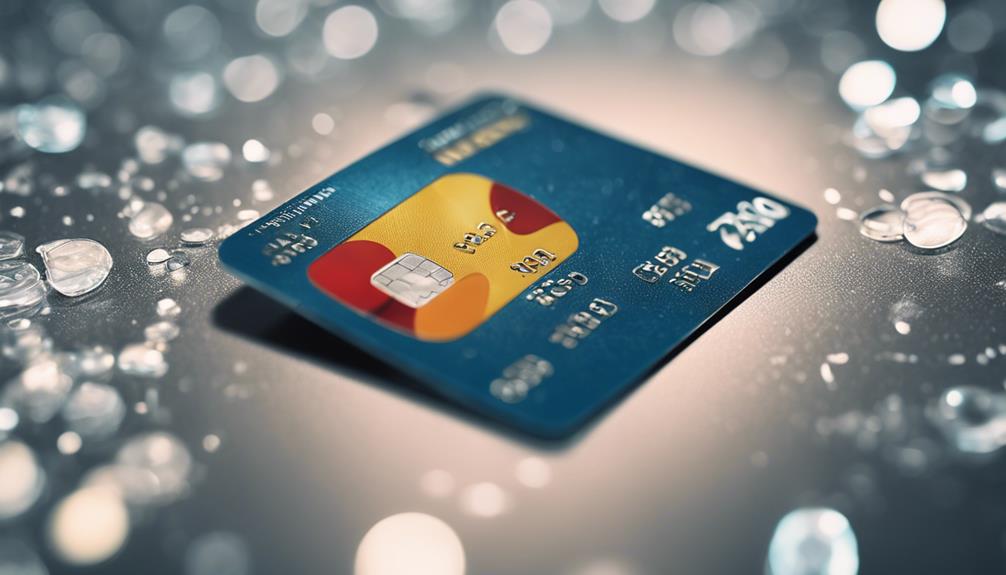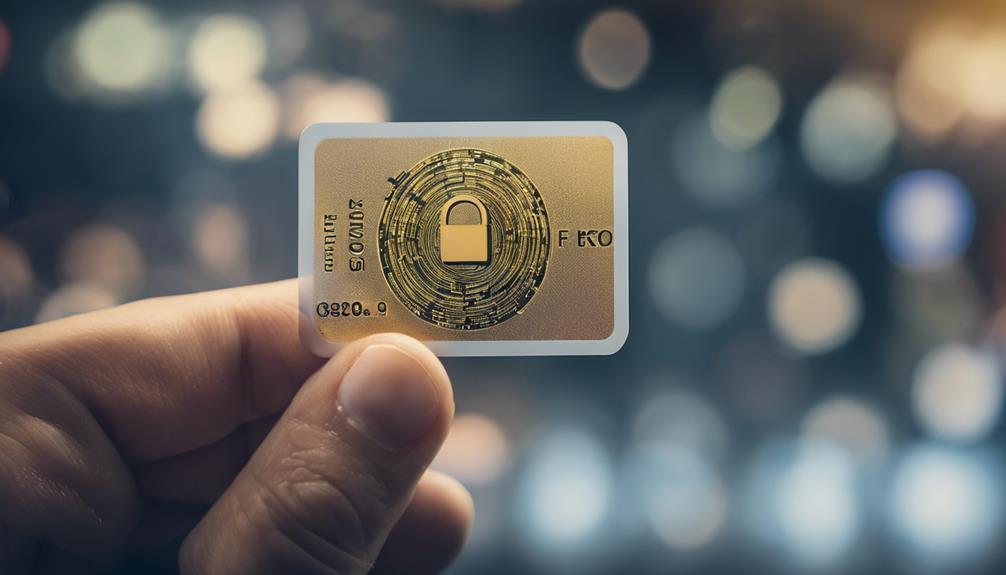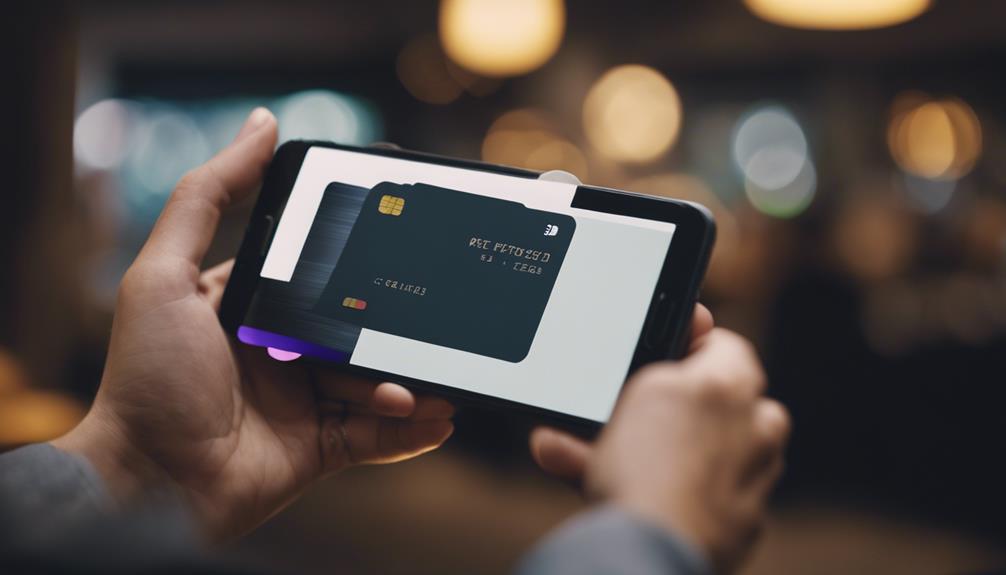To enhance card data security, consider encryption and tokenization. Encryption transforms data into code during transit, while tokenization swaps sensitive details for unique tokens, protecting data at rest and in use. Encryption focuses on securing information in motion, while tokenization safeguards it thoroughly. Combining both methods heightens overall security. Encryption converts data to a secure code, ensuring protection from interception. Tokenization eliminates storing actual card details, enhancing security per transaction. Implement strong encryption algorithms, manage keys securely, use unique tokens, and update mechanisms routinely to stay secure. Understanding these differences is crucial for robust data protection. When considering data security for card transactions, it is important to also consider the comparison of swipe vs keyedin transactions. Swipe transactions involve swiping the physical card through a card reader, while keyedin transactions require manually inputting the card details into a system. Each method comes with its own security considerations, and it is essential to assess the potential risks and implement appropriate security measures for each. By understanding the differences and implementing encryption and tokenization, businesses can ensure comprehensive data protection for all types of card transactions.
Key Takeaways
- Encryption secures data during transit through code conversion.
- Tokenization replaces cardholder data with unique tokens for enhanced security.
- Implement both methods to bolster overall data protection.
- Encryption focuses on securing data in transit, while tokenization safeguards data at rest.
- Combining encryption and tokenization enhances data security posture and customer trust.
Key Differences Between Encryption and Tokenization

When comparing encryption and tokenization for card data security, understanding the key differences is essential for implementing effective protection measures. Encryption involves the process of converting sensitive data, such as card numbers, into a coded format to prevent unauthorized access. On the other hand, tokenization replaces the actual card numbers with a unique token that has no intrinsic value, making it useless if intercepted. When it comes to card data security, the key difference lies in the method of data transmission: swipe vs keyedin. Understanding the distinction between encryption and tokenization allows businesses to choose the most suitable method for safeguarding their customers’ payment information.
Encryption secures card data during transit by converting it into a code that can only be deciphered with the correct key. On the other hand, tokenization replaces sensitive cardholder data with unique tokens, ensuring that the actual information is never stored, thereby reducing the risk of data breaches. It is important to note that both encryption and tokenization play important roles in protecting cardholder data. While encryption protects data during transit, tokenization ensures that sensitive information is never stored on the merchant’s systems. When it comes to the swipe vs keyed comparison, both encryption and tokenization provide a layer of security that helps to mitigate the risk of data breaches and protect both merchants and consumers. By implementing these technologies, businesses can significantly reduce their susceptibility to cyber threats and safeguard sensitive customer information.
While encryption focuses on securing data in transit, tokenization safeguards information at rest and during use. It's recommended to combine both methods to enhance overall security and simplify PCI-DSS compliance, ultimately reducing audit costs.
Advantages of Encryption for Card Data Security

To enhance your card data security strategy, consider the advantages of encryption as a fundamental aspect in safeguarding sensitive information during transit.
Encryption converts data into a secure code, making it unreadable to unauthorized users without the proper decryption key. By encrypting card data during transit, you guarantee that even if intercepted, the information remains protected. This process adds a layer of security that helps prevent data breaches and unauthorized access.
Encryption is a widely accepted method for securing sensitive information, meeting compliance standards such as PCI-DSS requirements. Implementing encryption not only safeguards your customers' card data but also enhances your overall data security posture, instilling trust and confidence in your business's ability to protect sensitive information.
Benefits of Tokenization in Cardholder Data Protection

Tokenization greatly enhances cardholder data protection by replacing sensitive card data with unique tokens, ensuring secure transactions and reducing the risk of unauthorized access.
- Tokenization eliminates the need to store actual card data on servers, reducing the likelihood of data breaches.
- Unique tokens generated for each transaction enhance security by preventing the exposure of sensitive information.
- Unauthorized parties attempting to access tokenized data will only retrieve meaningless tokens, maintaining the confidentiality of cardholder information.
Best Practices for Implementing Encryption and Tokenization

Switching gears, let's now discuss the effective implementation of encryption and tokenization to enhance cardholder data security. When it comes to enhancing cardholder data security, encryption and tokenization play a crucial role in protecting sensitive information. By encrypting data in transit and at rest, organizations can ensure that cardholder data is safeguarded from unauthorized access. Similarly, tokenization replaces sensitive data with unique tokens, further minimizing the risk of data breaches. When comparing transaction security, it is important to consider the benefits of both encryption and tokenization in securing cardholder data throughout the payment process. These measures not only protect sensitive information but also build trust with customers and uphold compliance with data protection regulations. When comparing security methods, organizations must also consider the cost and complexity of implementation, as well as the impact on user experience. While encryption and tokenization are effective in securing cardholder data, they may require additional resources and expertise to deploy and maintain. It’s important to weigh the trade-offs and choose the solution that best fits the organization’s needs and budget. Ultimately, prioritizing cardholder data security through the effective implementation of encryption and tokenization is essential for maintaining trust and credibility in the ever-evolving landscape of payment security.
When implementing encryption, make sure that all sensitive card data is encrypted using strong algorithms both in transit and at rest. It's important to securely manage encryption keys to prevent unauthorized access.
Tokenization should involve replacing actual card data with unique tokens to protect sensitive information during transactions and while stored in databases. Implement strict access controls to limit who can decrypt tokens.
Regularly update encryption and tokenization mechanisms to stay ahead of potential vulnerabilities. By following these best practices, you can greatly enhance the security of cardholder data and reduce the risk of breaches.
How Encryption and Tokenization Enhance PCI Compliance

Enhancing PCI compliance through encryption and tokenization is a critical step in securing cardholder data effectively. These security measures not only protect sensitive information but also assist in meeting regulatory standards.
Here are three ways encryption and tokenization enhance PCI compliance:
- Minimize Data Exposure: Encryption and tokenization reduce the amount of sensitive data visible within your systems, limiting the scope of PCI compliance assessments.
- Enhance Data Security: By encrypting data in transit and replacing card details with tokens, these methods strengthen overall data security, aligning with PCI requirements.
- Simplify Compliance Processes: Implementing encryption and tokenization simplifies the compliance process by reducing the number of applicable PCI controls and making audits more straightforward.
Frequently Asked Questions
How Do Encryption and Tokenization Work Together to Secure Card Data?
When combining encryption and tokenization, you strengthen card data security. Encryption shields data during transit, while tokenization swaps card details with unique tokens for added security at rest. This dual approach ensures that sensitive card data is protected from potential breaches and theft. Additionally, by implementing both encryption and tokenization, merchants can provide an extra layer of swipe transaction security for their customers, instilling greater confidence in the safety of their payment information. This comprehensive strategy can help businesses build trust with their clientele and demonstrate a commitment to upholding the highest standards of data protection.
Storing credit card info off-site is wise. Employing both methods enhances overall security, aiding in PCI-DSS compliance and lowering audit costs.
Working together, encryption and tokenization create a robust defense against potential breaches, ensuring your cardholder data remains safeguarded. By encrypting sensitive data, such as credit card numbers, before it is transmitted and storing tokenized versions of that data, businesses can significantly reduce their vulnerability to cyber attacks. This combination of encryption and tokenization also helps businesses comply with industry data security standards, providing peace of mind for both merchants and their customers. At nofee credit card processing, we prioritize the security of your cardholder data and offer advanced encryption and tokenization solutions to keep your business safe from potential threats.
What Are the Potential Drawbacks of Relying Solely on Encryption for Card Data Protection?
Relying solely on encryption for card data protection can leave vulnerabilities. While encryption safeguards data in transit, it may not provide thorough protection at rest. Without tokenization, stored information is still at risk.
Enhance your security by combining encryption with tokenization to guarantee full coverage for cardholder data. Don't overlook potential drawbacks of relying solely on encryption; a layered approach is key to robust protection. Consider the different methods of card data entry, such as swipe vs keyedin, and ensure that both are effectively protected. While encryption is effective at securing data in transit, tokenization adds an extra layer of protection for data at rest. By implementing both techniques, businesses can stay ahead of potential security vulnerabilities and maintain compliance with industry regulations. Consider the potential risks of a single-layer security approach and the importance of addressing all potential points of vulnerability, such as swipe vs keyedin transactions. By combining encryption and tokenization, businesses can ensure that cardholder data is consistently protected, whether in transit or at rest. This comprehensive approach not only strengthens security but also provides peace of mind for both businesses and their customers.
Can Tokenization Be Used for Non-Payment Card Data Security?
Tokenization can indeed be utilized for securing non-payment card data. This method replaces sensitive information with unique tokens, enhancing data protection.
Are There Specific Industries or Businesses That Benefit More From Encryption Over Tokenization?
In specific industries or businesses, encryption is more beneficial than tokenization for protecting card data during transit. Sectors dealing with high volumes of sensitive transactions, like finance or healthcare, often prioritize encryption due to its direct safeguarding of data in transit.
Additionally, industries with stringent regulatory requirements lean towards encryption as it provides a more traditional approach to securing sensitive information. Evaluate your industry needs to determine the most suitable security measure.
How Do Encryption and Tokenization Solutions Differ in Terms of Scalability for Growing Businesses?
When considering scalability for growing businesses, encryption and tokenization solutions differ in their approach. Encryption secures data during transit by converting it into a secure code, while tokenization substitutes card details with unique tokens for storage.
Encryption may require more resources as data volume increases, while tokenization offers a more scalable option as it reduces the need for extensive data processing. Both methods can be tailored to accommodate business growth efficiently.
Conclusion
In conclusion, both encryption and tokenization play pivotal roles in enhancing card data security.
While encryption protects data in transit, tokenization shields it at rest, providing thorough protection against potential threats.
Implementing these security measures not only strengthens defenses but also simplifies PCI-DSS compliance, reducing complexity and costs.
According to recent studies, businesses that adopt encryption and tokenization reduce the risk of data breaches by up to 60%.
Stay ahead of the game and safeguard your business with these powerful security tools.










